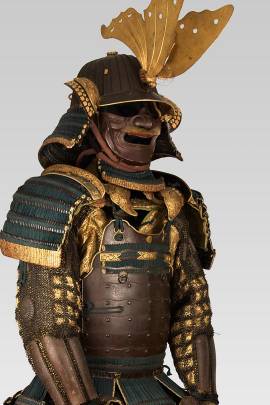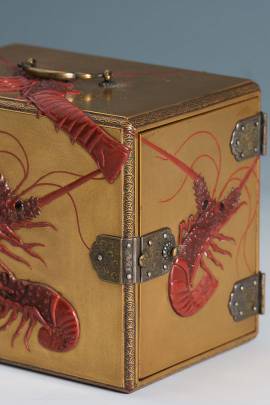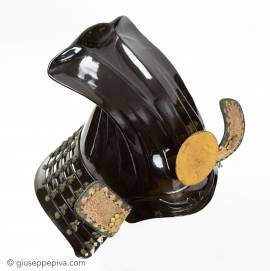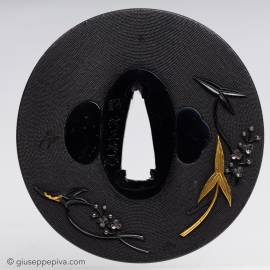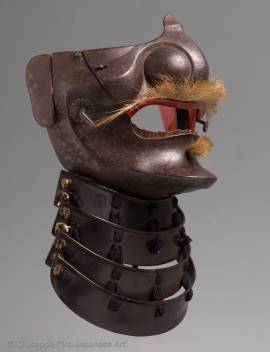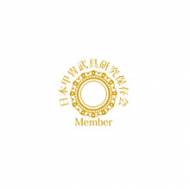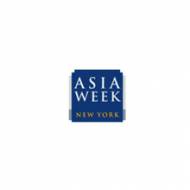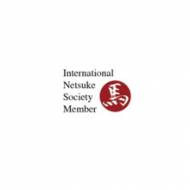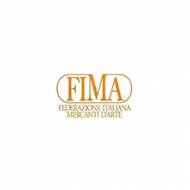Kakukuzin-nari kawari kabutoHelmet shaped as a cloth headgearMid Edo Period (1615-1867) 18th century The kakuzukin, or squared cap, was formed by a rectangular cloth folded and sewn along the sides. The decoration over the iron bowl imitating this headgear is made in harikake, a mixture of papier-maché and lacquer that results light and solid at the same time. The last plate of the neck guard (shikoro) on this helmet is lacquered in gold.Harikake had been used during the Momoyama period (1573-1715) when generals begun to wear large helmets shaped with unusual and extravagant...
WORKS FOR SALE
Signed Nomura Masahide (野村 正 英) with kaoEdo period, 18th-19th centuryMarugata: 7.49 x 7.3 cmThickness: 4.3 mmNBTHK Tokubetsu Hozon Tosogu The Nomura school was founded by Kozaemon Masatoki, who studied with Gotō school artists and maintained their stylistic features, producing works in shakudo nanako with subjects in takabori. Due to this resemblance some sources refer to the Nomura school as "Awa-Gotō". The school's production originally included all kinds of sword fittings with the exception of tsuba, which begun to be made only in the second part of the Edo period....
Myochin school, Mid Edo Period (1615-1867)Half mask for samurai armorSamurai armour's mask A russet iron mask of me no shita men (half face) type.The expression is fierce (ressei) with a big nose, the hair-horse mustache and beard and, particular feature, only the lower teeth visible.Cod. men1186
Copyright © 2016 - giuseppe piva - VAT: 05104180962


